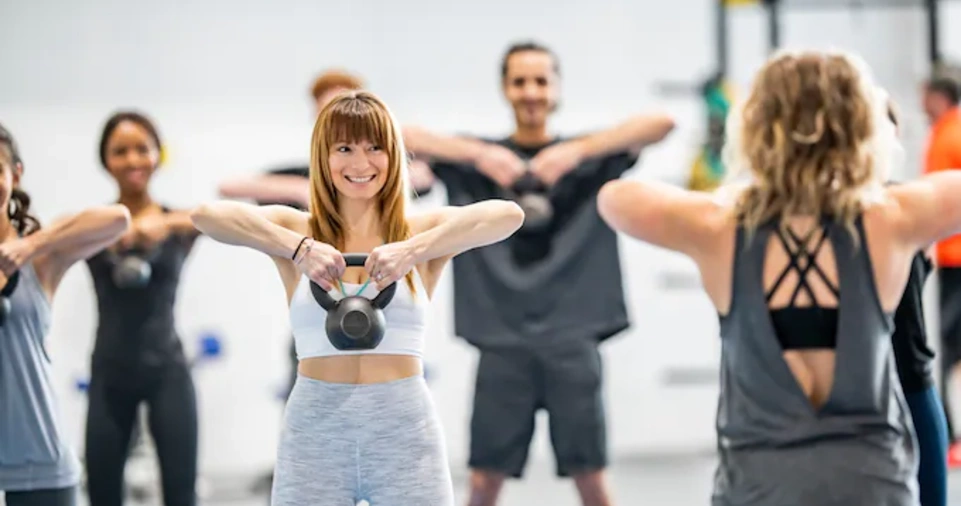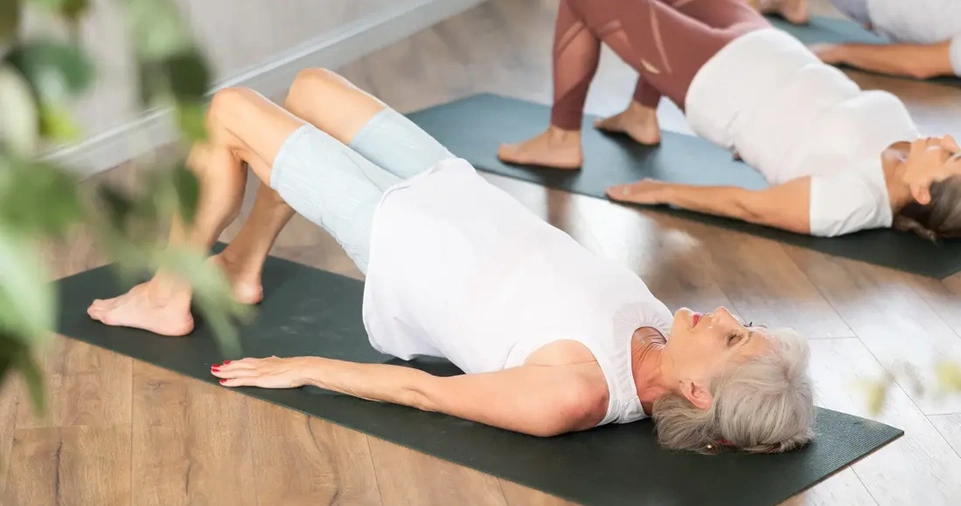How to Start a Simple Workout Routine begins with understanding that fitness doesn’t require complex plans or expensive equipment?
A basic routine—built on consistency, balanced movement, and realistic goals—can deliver lasting health benefits.
Whether you’re aiming to improve energy, manage weight, or reduce stress, starting with simple, structured workouts is the most effective approach.
This guide will show you how to build a beginner-friendly fitness plan tailored to your lifestyle, with practical tips for choosing the right exercises, scheduling workouts, and staying motivated.
You’ll also learn how to track progress, avoid common mistakes, and gradually increase intensity as your strength and confidence grow. If you’re ready to move more and feel better, here’s exactly where to start.
Why Start a Workout Routine?
Regular exercise offers powerful benefits:
- Improves mental health and reduces stress
- Increases energy levels and sleep quality
- Boosts cardiovascular health and reduces disease risk
- Helps with weight management
- Improves strength, flexibility, and balance
Step 1: Define Your Fitness Goals
Before you jump into a workout, decide what you want to achieve. Your goals will determine what kind of routine suits you best.
Common Fitness Goals:
| Goal | Focus | Example Activities |
|---|---|---|
| Weight loss | Cardio + calorie deficit | Walking, jogging, HIIT |
| Muscle gain | Resistance training | Weight lifting, bodyweight exercises |
| General health | Balance of cardio and strength | Walking + home workouts |
| Stress relief | Low-impact movement | Yoga, stretching, Pilates |
| Improved endurance | Aerobic training | Swimming, cycling, brisk walking |
Write your goal down and keep it realistic and time-bound. For example: “I want to work out 3 times per week for the next 30 days to improve my energy and build consistency.”
Step 2: Choose Your Workout Types

A well-rounded routine includes three types of exercise: cardiovascular, strength, and flexibility training. Here’s a breakdown.
Cardio (Aerobic Exercise)
Improves heart health and burns calories.
- Examples: Brisk walking, jogging, cycling, dancing, jump rope
- Beginner tip: Start with 15–20 minutes and gradually increase.
Strength Training
Builds muscle and boosts metabolism.
- Examples: Bodyweight moves (push-ups, squats), resistance bands, dumbbells
- Beginner tip: Focus on form over weight.
Flexibility & Mobility
Prevents injury and improves range of motion.
- Examples: Stretching, yoga, foam rolling
- Beginner tip: Include at least 5–10 minutes after workouts.
ALSO READ: How to Set Up a Gaming Console: A Step-by-Step Guide for Every Gamer
Step 3: Create a Simple Weekly Plan
Start small—consistency is more important than intensity. Here’s a sample weekly schedule for beginners.
Sample Beginner Workout Plan
| Day | Activity | Duration | Focus |
|---|---|---|---|
| Monday | Walk + Bodyweight Circuit | 30 min | Cardio + Strength |
| Tuesday | Rest or light stretching | 20 min | Recovery |
| Wednesday | Beginner strength workout | 30 min | Strength |
| Thursday | Yoga or active stretching | 20–30 min | Flexibility |
| Friday | Walk or low-impact cardio | 30 min | Cardio |
| Saturday | Full-body home workout | 30–40 min | Mixed |
| Sunday | Rest or gentle yoga | 20 min | Recovery |
Start with 3–4 days/week and work your way up. Remember, something is better than nothing.
Step 4: Build a Routine Around Your Lifestyle
To make your routine stick, adapt it to your schedule. Consider:
- Time of day you have the most energy (morning vs. evening)
- Location preference (home, gym, outdoors)
- Time available (even 15 minutes counts)
- Obstacles like kids, work, or limited space—plan around them
Tips to Stay Consistent:
- Put workouts in your calendar
- Set out your workout clothes in advance
- Use alarms or reminders
- Have a “Plan B” for busy days (5-minute quick workouts)
Step 5: Start with Bodyweight Workouts
Bodyweight exercises are perfect for beginners. No equipment needed, and they build strength, endurance, and balance.
Beginner Bodyweight Routine
Do 2–3 rounds of the following (rest 30–60 seconds between exercises):
| Exercise | Reps/Duration |
|---|---|
| Squats | 12–15 |
| Push-ups (wall or knee) | 8–10 |
| Glute bridges | 12–15 |
| Plank | 20–30 sec |
| Bird-dogs | 10/side |
| Standing march or jumping jacks | 30 sec |
Adjust reps and rest time based on your ability. Focus on form, not speed.
Step 6: Track Your Progress

Tracking helps you stay motivated and see your growth.
What to Track:
- Days you worked out
- Type of exercise and duration
- How you felt before and after
- Any increases in reps, sets, or weights
Use a fitness journal, an app, or a simple calendar. Celebrate milestones (e.g., one week of consistency, first full push-up).
ALSO READ: How to Choose Clothes That Flatter Your Body Type?
Step 7: Eat to Fuel Your Fitness
A simple workout routine benefits from proper nutrition. You don’t need a restrictive diet—just smart choices.
Nutrition Tips for Beginners:
| Do | Don’t |
|---|---|
| Drink plenty of water | Skip meals |
| Eat a balanced mix of carbs, protein, and healthy fats | Rely on processed snacks |
| Have a pre-workout snack if needed (banana, yogurt, etc.) | Overeat after workouts |
| Fuel recovery with protein post-workout | Ignore hunger signals |
Good nutrition supports energy, muscle recovery, and long-term health.
Step 8: Overcome Common Challenges
Lack of Time
- Do 10-minute routines
- Combine workouts with tasks (e.g., squats while brushing teeth)
- Wake up 20 minutes earlier
Low Motivation
- Start with workouts you enjoy
- Use music or podcasts as motivation
- Find a workout buddy or accountability partner
Injury or Soreness
- Rest and stretch
- Reduce intensity
- Focus on form to avoid injury
Plateaus
- Change up your routine
- Add more reps or resistance
- Try a new activity
Step 9: Explore Beginner-Friendly Workout Options
You don’t have to go it alone—there are tons of accessible options.
Free Resources to Get Started:
| Platform | Type | Best For |
|---|---|---|
| YouTube (Fitness Blender, Yoga With Adriene) | Video workouts | Home routines |
| Nike Training Club app | App | Guided beginner workouts |
| Blogilates | Website/App | Pilates-style training |
| Fitbit or Garmin | Trackers + workouts | Progress tracking |
| Local parks or rec centers | In-person classes | Walking, aerobics |
Choose what you enjoy—that’s the key to sticking with it.
Step 10: Make It a Habit

Building a habit takes time. Most experts agree it takes about 21–66 days to form a routine. Be patient with yourself.
Habit-Building Tips:
- Start with small, specific actions (e.g., “walk 10 minutes”)
- Link your workout to a current habit (e.g., “after coffee, I stretch”)
- Track streaks to stay accountable
- Don’t miss twice—if you skip a day, get back the next
Bonus: Add Variety as You Progress
Once you build a base, consider mixing it up with new challenges:
- Try resistance bands or light dumbbells
- Add intervals to your walks or jogs
- Join a beginner group class
- Try new fitness formats like barre, kickboxing, or spin
Variety keeps it fresh and improves overall fitness.
Table: Example 4-Week Beginner Workout Plan
| Week | Focus | Workouts/Week | Duration |
|---|---|---|---|
| Week 1 | Build habit | 3 | 20–30 mins |
| Week 2 | Increase consistency | 4 | 30 mins |
| Week 3 | Add challenge | 4–5 | 30–35 mins |
| Week 4 | Solidify habit | 5 | 30–40 mins |
By the end of 4 weeks, you’ll likely notice:
- More energy
- Better sleep
- Less stress
- Improved strength and stamina
ALSO READ: How to Choose the Right Business Name: A Step-by-Step Guide for Lasting Success?
Conclusion
Starting a simple workout routine doesn’t require perfection—just commitment to begin. Start small, choose movement you enjoy, and build gradually. Focus on consistency over intensity, and don’t let setbacks stop your progress.
Whether you’re walking around the block or doing push-ups in your living room, every effort counts.
This isn’t about quick fixes—it’s about creating a sustainable, healthy lifestyle you’ll stick with for years to come.







